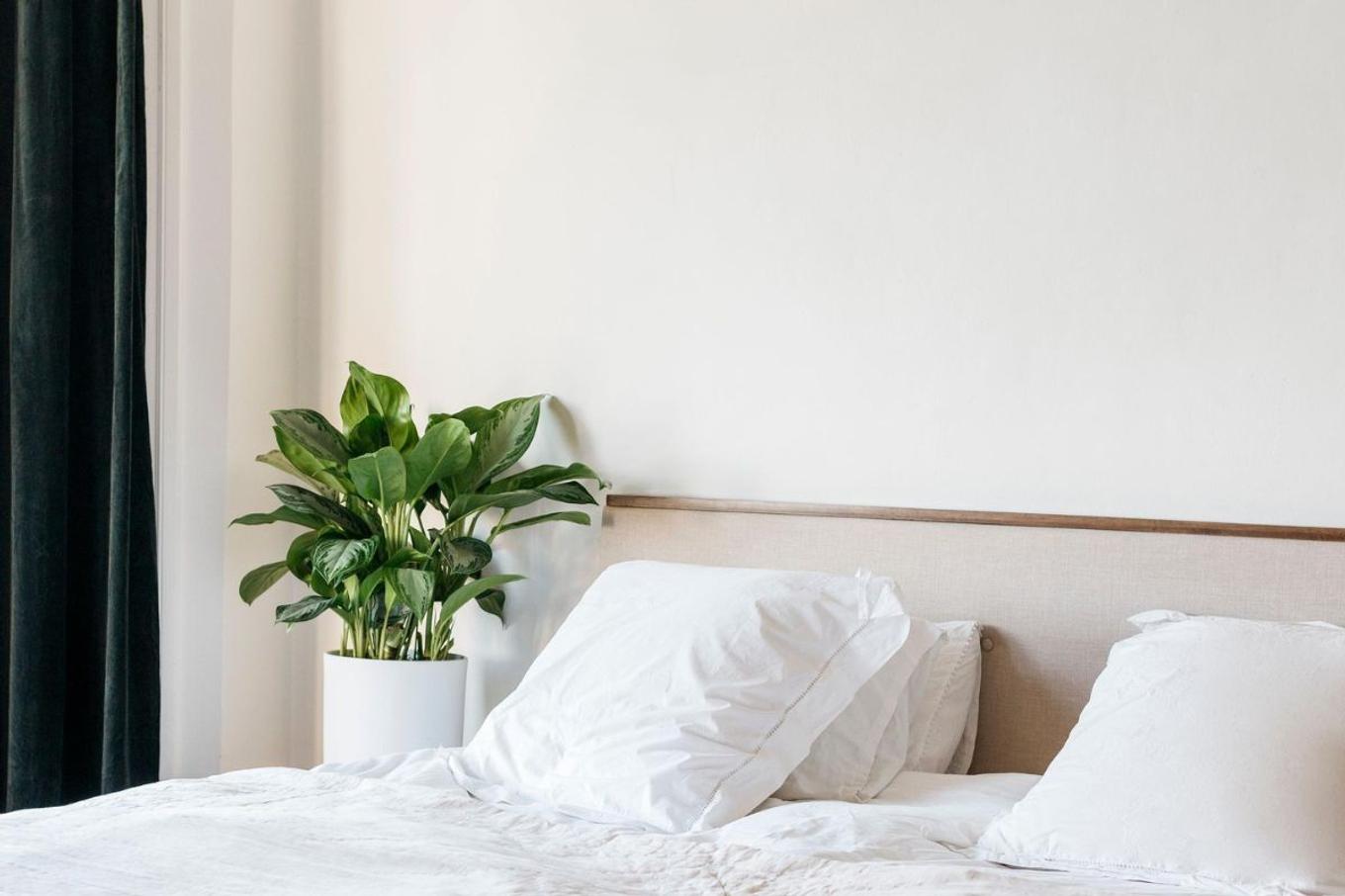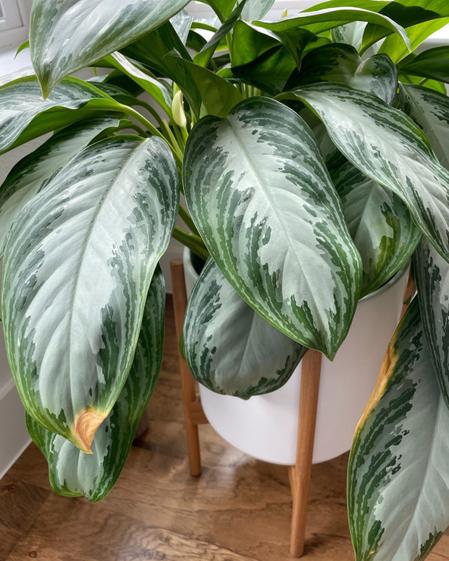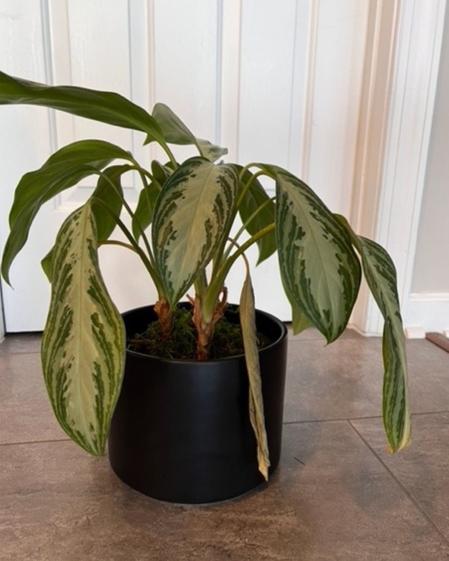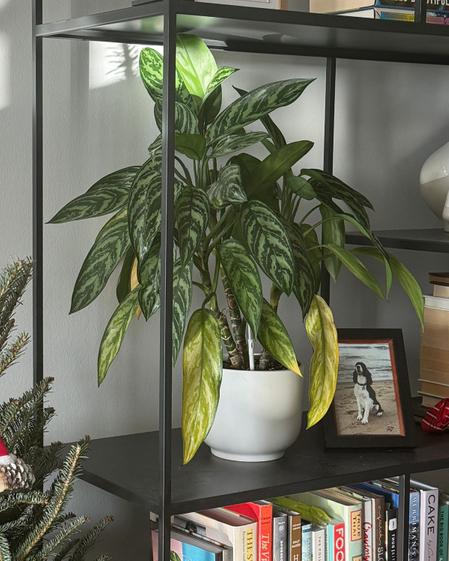Aglaonema Care Guide

With its vibrant foliage and easygoing nature, the Aglaonema, also known as Chinese Evergreen, Silver Evergreen or Tiger Evergreen, is a favorite among houseplant lovers. Native to the tropical and subtropical regions of Asia, this plant is prized for its beautifully patterned leaves in different shades of green and silver and sometimes even pink and red. Aglaonemas are also excellent air purifiers and adapt well to various indoor environments, making them perfect for both beginners and experienced plant parents alike.
Simple Care Instructions for the Aglaonema
Light Requirements
Aglaonemas are adaptable when it comes to light, thriving in low to bright indirect light. While they tolerate low-light conditions well, more colorful varieties (with red, pink, or variegated leaves) will show their best colors in medium to bright indirect light.
Avoid placing them in direct sunlight, which can scorch their delicate leaves.
Watering Needs
Aglaonemas prefer their soil to dry slightly between waterings. Water when the top 1–2 inches of soil feel dry, which may be once a week in warmer months and less often in winter. These plants don’t like to sit in soggy soil, so be sure to use a pot with drainage and never let water collect at the bottom.
If the leaves begin to yellow or drop, it could be a sign of overwatering. Conversely, dry, crispy edges often indicate underwatering.
Need help finding the right balance? Try a moisture meter or shop our favorite minimalist moisture meter here.
Humidity and Temperature
Aglaonemas prefer a warm, humid environment, but they’re quite forgiving of average household conditions. Keep temperatures between 65–85°F (18–29°C), and avoid cold drafts or sudden temperature drops, which can cause leaf damage.
To increase humidity, consider placing the plant near a humidifier or on a pebble tray with water.
Soil and Fertilizing
Plant your Aglaonema in a well-draining potting mix, such as a peat-based blend with added perlite or bark for airflow. This helps avoid the risk of root rot and keeps your plant’s roots healthy.
Fertilize once a month during the growing season (spring and summer) with a balanced liquid houseplant fertilizer. Skip feeding in the fall and winter when the plant’s growth naturally slows.
Try our natural plant food to promote healthy growth without harsh chemicals.
Common Problems and Troubleshooting Tips
Yellowing Leaves – Overwatering
Symptoms: Older leaves turn yellow and may fall off.
Cause: Too much water and poor drainage.
Solution: Check for soggy soil and allow it to dry more between waterings. Make sure your pot has proper drainage and that the soil isn’t compacted.
Brown Tips – Low Humidity or Underwatering
Symptoms: Leaf tips are brown and crispy.
Cause: Air too dry or watering too infrequent.
Solution: Increase humidity around the plant and check soil moisture more regularly. Mist the plant or use a humidifier if needed.
Drooping Leaves – Cold Temperatures or Shock, or Underwatered
Symptoms: Leaves appear limp and lifeless.
Cause: Exposure to cold air, a sudden move, or recent repotting. If you've skipped some waterings, it's also possible your plant will droop.
Solution: Move to a warmer, more stable environment. The plant should recover as it adjusts.
Fading Colors – Not Enough Light
Symptoms: Dull or faded leaves, especially in red or pink varieties.
Cause: Insufficient light.
Solution: Move the plant to a spot with brighter indirect light to restore vibrancy.

Possible moisture imbalance.

Underwatered Silver Evergreen.

Adjusting to new environment.
Seasonal Care Tips
In spring and summer, your Aglaonema will be actively growing. This is the ideal time to water more regularly, fertilize, and even repot if needed.
In fall and winter, reduce watering and stop fertilizing as the plant enters a slower growth phase. Keep it in a warm, draft-free spot to avoid cold stress.
With its vibrant leaves and adaptable care needs, the Aglaonema brings a splash of color and elegance to any indoor space—all with minimal fuss.












